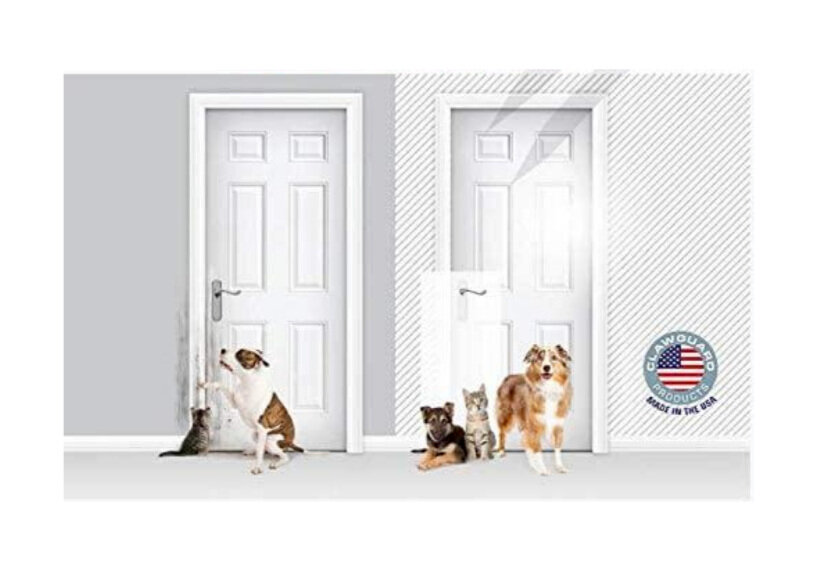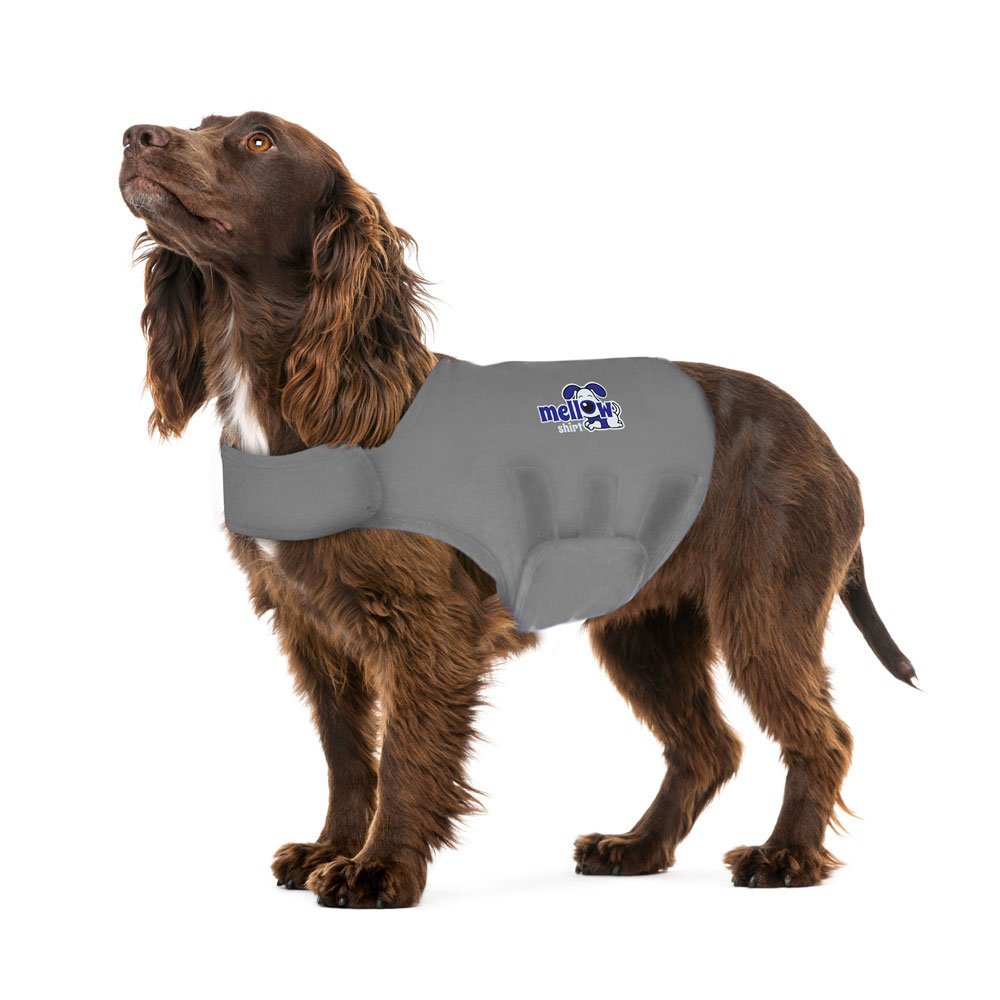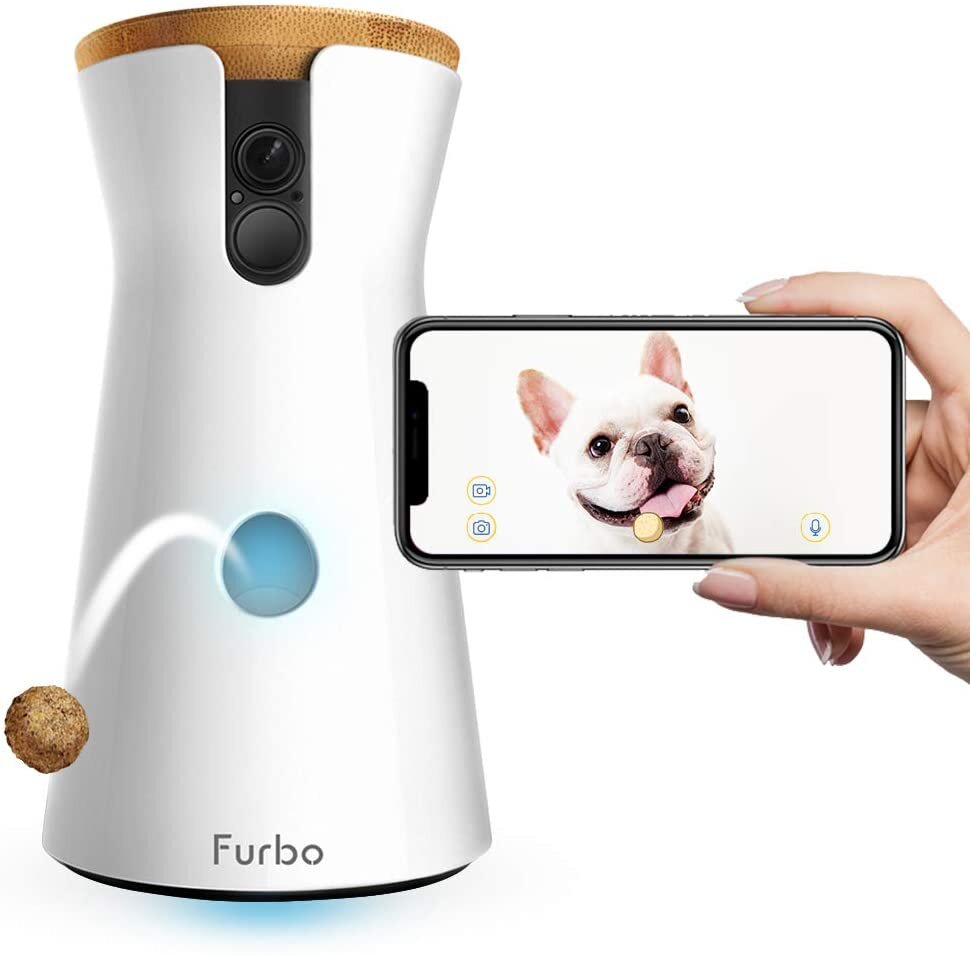Separation Anxiety
Separation issues like anxiety are not uncommon for dogs especially for dogs that have been re-homed since they have already experienced someone walking away and never returning or coming to find them. Purchasing a puppy from a breeder is no guarantee that the puppy won’t come predisposed to separation anxiety either. Separation anxiety can take root before 8-weeks of age and the foundation for separation anxiety can be laid in the manner in which the mother had separation from her puppies.
I do not recommend the use of a crate for dogs with separation issues because we can make the problem worse. Contrary to popular belief dogs nor wolves are “den” animals in the way it has been popularized. “Denning” is a seasonal maternal behavior and the den is only used for newborn puppies for about 8-weeks before being abandoned. From 8-20 weeks the puppies are moved to an area with a “nest”. [1] After 20-weeks I think it would be more accurate to say dogs seek out a resting place. While there may be a small percentage of dogs that would choose a protected area such as a crate for resting this is not the norm. If this was the normal behavior for dogs there would not be the strong emphases on “crate training”. Choosing a resting place that is isolated is different from choosing a crate. Sadly way too many people believe a crate is a necessary "tool" for confinement. When confinement is required, I prefer to limit a dog’s access to other areas with a barrier like a baby gate or at times a large x-pen. I think it’s important for every dog to accept a crate, but I’m not a fan of using crates except in limited circumstances. For vehicle travel a crate is a great choice if it is crash tested and secured in the vehicle. Crates & Gates
Fears & Phobias
If your dog has fear or phobia sound sensitivities these will need to be addressed for your dog to feel safe and comfortable being left alone. Fear/phobia soundtracks are a tool to help desensitize dogs to noises that result in fearful reactions, agitated reactions, or highly excitable reactions. How they are used is dependent on the dog’s behavior. Used improperly you can sensitize a dog to sounds by making the reaction stronger or hyper sensitive to the sounds. Sensitization can also result in the dog becoming sensitive to additional sounds that were previously of no concern. For guidance on how to properly desensitize to sounds follow the guidance here: Fear & Phobias
Phase 1
The first place to start when addressing separation issues is to make sure we are fulfilling all of our dog’s needs. Dog’s need; attention, social interaction, exercise, mental stimulation, food, water. Variety for many dogs is the second key to fulfilling needs. Dogs need to have the opportunity to exhibit natural behaviors such as running, digging, following scents and playing. Enriching Your Dog’s Life
Exercise
Since most people can’t spend all their time with their dogs’, it is important to leave behind a tired dog that is ready to rest while we are away. Unless there is a medical reason that prohibits it, exercise your dog before leaving them behind. It’s important we start with lots of exercise so when we leave a dog alone/separated they are ready to rest and are thankful for the quite time. A dog that is well-exercised and has had all its need met can learn to appreciate the solitude of being left alone which is vastly different from forced isolation. Take your dog out daily for exercise and give them a chance to enjoy the outside world. Walks are great, but don’t turn them into a march or just a structured activity like heeling. Make walks enjoyable by giving your dog opportunities (and permission) to explore and use his/her nose to sniff those areas that are of interest to him/her as long as it is appropriate and safe. Vary the route you take on your walk and go someplace new for a walk.
A large yard is no substitute for walking or exercising your dog. Even if your dog has 40-acres to run, most will spend the vast majority of the time waiting near the back door for someone to come out or to be let in. Play with your dog! Every dog should learn how to fetch and enjoy doing it with you if only for a couple of minutes. Some will naturally love to do this for hours, while others it will hold their interest for just a couple minutes. The key is that they enjoy the game with you. Some dogs enjoy running with their owners, but before you take them on a run, have them checked by your veterinarian first. Exercising Your Dog
Learn to Spend Time Alone
My focus is on teaching dogs to be alone for short periods of time, with the caveat being they learn we do return. Help dog’s learn to be on their own by incorporating times of separation several times a day when you are home. Use a barrier like a baby gate, barrier, etc… in an area of the house you can contain them safely. This area of confinement should be out of view of the entrance/exits you use. When you place your dog in this area be calm and casual and just ask them to hang out. (Don’t make a big deal out of it) It can be as simple as walking into any room and keeping them in or out of a room. Start with very short periods of time. Maybe as short as 10-seconds to start if needed. The goal is to keep it short enough that they do not start to become anxious or destructive and slowly increase the time as they are successful. When you do open the barrier/door be pleasant but as causal and as matter-of-fact as possible and forego any big or emotional greetings. You want to convey in a non-verbal manner that the separation was no big deal so do not make a it an event when you enter or let them out.
After you are able to leave your dog for more than a few seconds exit out one door and quickly enter through another door if possible. As an example if your dog is secured in an area like the dining room leave the patio door unlocked but shut and exit the house like you normally would through the front or garage door and walk to the rear of the house and enter the patio door. If using more than one door is not an option you can open and close the door without exiting then standing quietly for a short amount of time before reappearing. When you enter be as causal and as matter-of-fact as possible. You want to continue to convey in a non-verbal manner that the separation was no big deal. The purpose of doing this is to have your apparent exit not be a reliable indicator that you have left the home and you could return at any time. Do not do this every time he/she is segregated but enough to be unpredictable. Take the opportunity to exit out of differing doors and return through another and sometimes the same door. Remember the goal is to be as causal and as matter-of-fact as possible, so no greeting when you enter. Just pleasantly go about your business. Continue with this several times during the day. Work up to leaving them for increasing amounts of time.
Cameras to keep a watch on your dog
Music
When you are home and your dog is someplace they feel safe and is lying down resting comfortably you can play calming music to start to build an association between relaxation and calming music. At this stage it’s important to only play the music while you are home and the dog is resting comfortably so the music does not become an indicator that they will be left alone. After the calming music has become associated with relaxation you can start to play the music during random times of the day when your dog is calm. Calming music can help comfort dogs, mask noises outside, break the silence, and provide background noise while we are not home. As the length of time increases that your dog is left alone you can incorporate calming music now since it has been associated with relaxation and not your departure. Calming Music for Dogs
Leaving the TV or radio on can help mask noises but the emergency broadcast alerts can be alarming for dogs so it is best to play your own recording to avoid this. To mask the sound of voices outside the room where your dog is left use a white noise machine. If your dog has fear or phobia sound sensitivities these will need to be addressed for your dog to feel safe and comfortable being left alone. For guidance on how to properly desensitize to sounds follow the guidance here: Fear & Phobias
Toys
Toys can be important to a dog′s development and a way to entertain and distract and they can be an important part of our program. For dog that enjoy toys and chewing on things leave a few toys in their confinement area.
As the time left alone increases start hiding and staging enticing treat toys in the separation area for them to discover before securing them in this area. Toys can help distract them from focusing on your absence. For separation issues I recommend people start staging (before we secure the dog and out of view) enticing treat toys in the separation area for the dog to discover and distract them from focusing on your absence. These could be placed on the floor with a simple sheet of paper covering it ready for the dog to discover. The Qwizl and Tux are strong and are two of my favorites. Happy Lapper’s are great for dogs that don’t chew on toys or things. If a dog likes to chew stay with the Tux and Qwizl. I stuff the Qwizl with a jerky strip (USA made and sourced). I often freeze food or treats in water in the Happy Lapper so it lasts longer since it is easy to get at.
Dog Toys https://www.homeskooling4dogs.com/dog-toys
I recommend every dog have three sets of toys:
One set that they have access to all the time to satisfy the need to chew.
A set of toys that they only have access to when they are playing with their owners. (fetch toys)
For dogs with separation issues it’s important not to leave the special fetch toys or other toys we engage in play with the dog laying out when we are not playing. Otherwise that toy can be a reminder of our absence.
Surprise Treat Toys
Phase 2
Get them to believe you are still home.
Once they become accustomed to shorts periods of times of separation while you are home than we just have to set things up so they believe you are still in the home when you do leave. How do we do this? We fool her senses! Ideally the place your dog is confined should be out of view of the door you exit the house. (Eyes)
Sound (Ears)
Make a recording during quieter times when you are home. Just record background sounds during calm not excited times so your dog does not think they are missing out on fun activities in another part of the house. The recording should include any normal sounds of activities while you are home e.g. working at your desk, in the kitchen, on the phone, vacuuming, etc.
Scent (Nose)
Then before you leave the house place one or more items of recently worn clothing just out of view in an area of the home where we want your dog to believe you are. If your dog is behind a door place the clothing item on the other side of the closed door at the base of the base of the door. We want the scent close and out of view so they think you are still there just out of view. Then turn on the recording you made and let it loop (continuous repeat) before you exit.
If your dog has already learned to have alone time while you are home, then if they did not see you exit, they will still smell and hear you in the home, therefore you must still be home!
When you do return just be pleasant and casual and don’t turn your return into an event when you open the barrier to give them free access. Wait a couple minutes after returning from another part of the house where you were out of view and let your dog out of confinement.
anxiety wrap
Some have found that an anxiety wrap has helped keep a dog calm. But as Temple Grandin points out (see below) this is not a magic wrap. The effect wears off in about twenty minutes. Also be mindful not every dog likes the sensation of a body wrap so don’t force it. If you chose to try a wrap be careful that you don’t create the wrong association for your dog. If your dog excepts the wrap make sure you condition your dog to wearing it for short periods of time before the stressful event is likely to occur. If you only put the wrap on just before the stressful event your dog may learn that the wrap is an indication that concerning things are about to happen. Instead use the wrap for short periods of time prior to the stressful events and after putting it on your dog “surprise” your dog with a special food stuffed toy that will require them to go lay down to enjoy. Its important that whatever you offer your dog is a surprise so don’t let them see you prepping or staging the item. This way the wrap is a signal of good things to come!
“With any kind of pressure treatment, you have to be careful not to leave it on too long. The maximum calming effect wears off in about twenty minutes, so, for longer treatments, it often works best to apply the treatment for twenty to thirty minutes, take it off for thirty minutes, and then reapply.” Temple Grandin - Animals Make Us Human: Creating the Best Life for Animals
Video Cameras
Check in on your dog while you are away with your smartphone or tablet. The Arlo free basic service plan supports up to five cameras.
If your dog has fear or phobia sound sensitivities these will need to be addressed for your dog to feel safe and comfortable being left alone. Fear/phobia soundtracks are a tool to help desensitize dogs to noises that result in fearful reactions, agitated reactions, or highly excitable reactions. How they are used is dependent on the dog’s behavior. Used improperly you can sensitize a dog to sounds by making the reaction stronger or hyper sensitive to the sounds. Sensitization can also result in the dog becoming sensitive to additional sounds that were previously of no concern. For guidance on how to properly desensitize to sounds follow the guidance here: Fear & Phobias


























